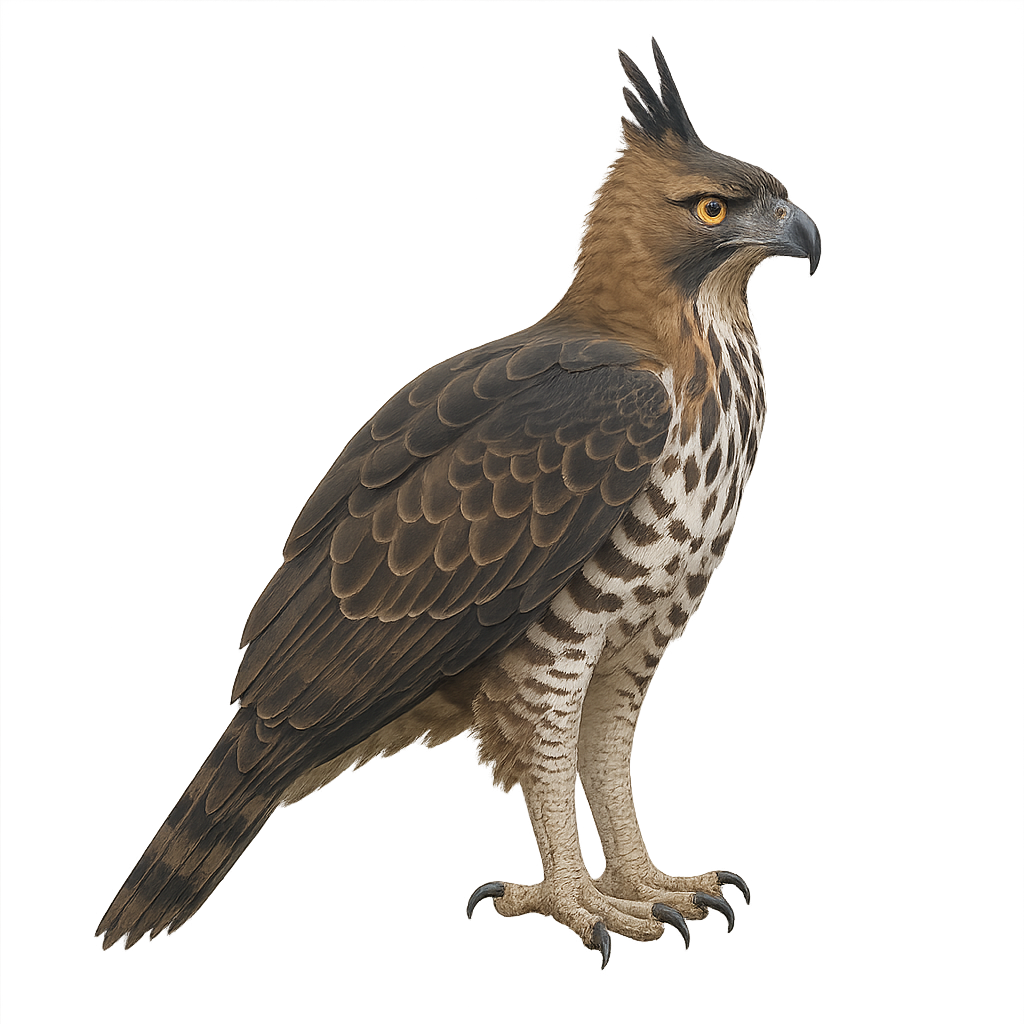Your wildlife photography guide.
Explore the ornate hawk-eagle in detail, study its behavior, prepare your shots.
Where to observe and photograph the ornate hawk-eagle in the wild
Learn where and when to spot the ornate hawk-eagle in the wild, how to identify the species based on distinctive features, and what natural environments it inhabits. The WildlifePhotographer app offers tailored photography tips that reflect the ornate hawk-eagle’s behavior, helping you capture better wildlife images. Explore the full species profile for key information including description, habitat, active periods, and approach techniques.
Ornate Hawk-Eagle
Scientific name: Spizaetus ornatus

IUCN Status: Near Threatened
Family: ACCIPITRIDAE
Group: Birds
Sensitivity to human approach: Very shy
Minimum approach distance: 50 m
Courtship display: March to May
Incubation: 45–48 jours
Hatchings: April to June
Habitat:
Humid tropical primary and secondary forests
Activity period :
Primarily active during the day, with peak activity in the morning and late afternoon.
Identification and description:
The Ornate Hawk-Eagle is a forest raptor from tropical America, measuring between 58 and 67 cm in length. It features a raised black crest, rufous head and flanks, a white throat bordered with black, and a black-and-white barred underside. Juveniles have paler plumage with a white head. An agile predator, it primarily hunts medium to large birds (toucans, parrots, tinamous), arboreal mammals (squirrels, agoutis), and occasionally reptiles. It inhabits primary and secondary humid tropical forests from southern Mexico to Argentina. Deforestation and hunting have led to population declines, classifying it as Near Threatened by the IUCN.
Recommended lens:
400 mm – adjust based on distance, desired framing (portrait or habitat), and approach conditions.
Photography tips:
Use a powerful telephoto lens to photograph the Ornate Hawk-Eagle perched or in flight. Opt for early morning hours for soft light and increased activity. Be discreet and patient, as this species is very shy and sensitive to disturbances.
The WildlifePhotographer App is coming soon!
Be the first to explore the best nature spots, track rutting seasons, log your observations, and observe more wildlife.
Already 1 431 wildlife lovers subscribed worldwide

